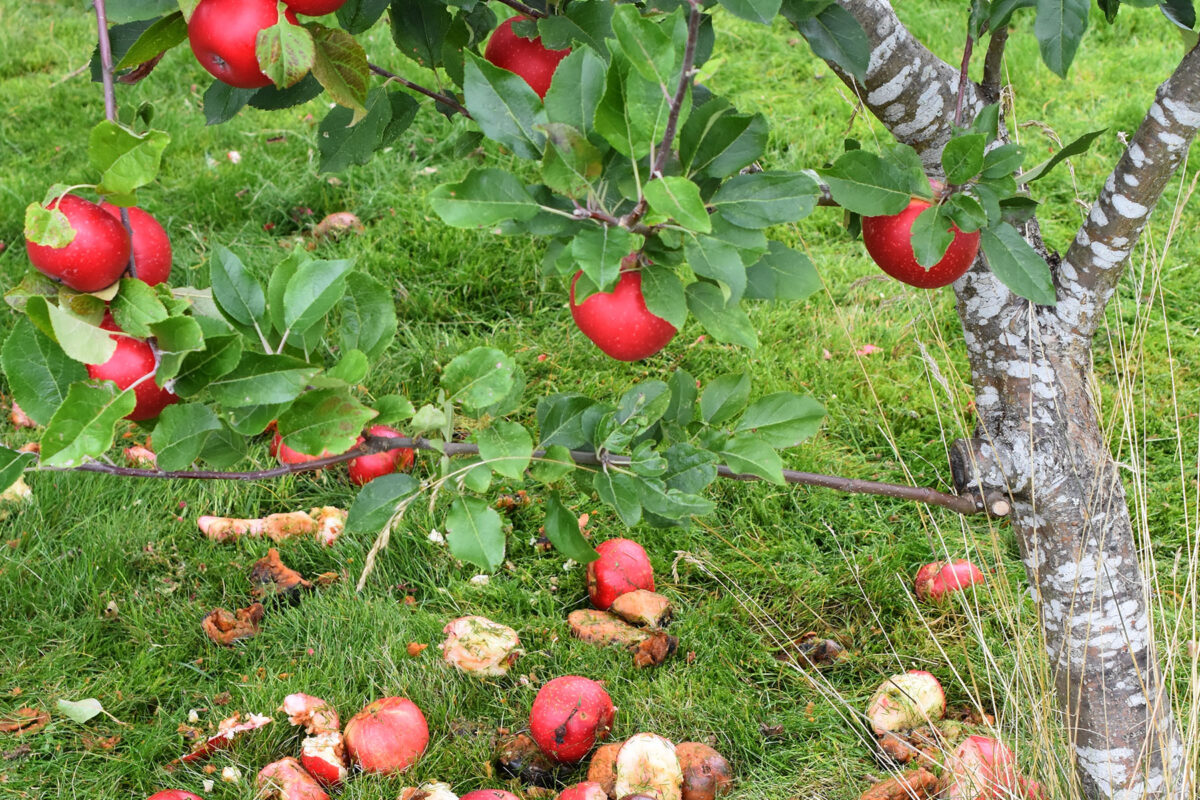Fruit fly control throughout the year
Before choosing and developing an effective fruit fly control strategy at home, it’s important to think about three factors: where you live, which fruits and vegetables you want to grow, and what measures you’re prepared to take on.
Living environments
The environment and climate dictate the tempo of fruit fly activity. This includes Temperature, moisture levels and fruit type which will all impact the fruit fly’s behaviour, so it’s important to think about where you live and the season and prevalent conditions as these will guide your control strategy.
While fruit flies may be active all year round in tropical regions, during spring (September to November) populations either start to become active or increase in size. This coincides with increased temperatures and the availability of suitable hosts. In early spring, overwintering adult flies become active and female flies will be looking for a source or protein which is needed for their eggs to develop.
By late spring, fruit fly may have laid eggs in some early ripening fruit and from this point onwards the larvae will develop and the fruit fly population will start to increase.
The main measures to use in early spring are fruit fly monitoring traps to identify when adult flies are first active, as well as direct control measures such as protein bait sprays and traps. Starting these control actions too late will allow fruit fly populations to build up rapidly.
By summer (December to February) fruit flies are likley to be at their most active. In warmer regions they might have already completed a full life cycle or more, while in cooler areas they might only just be becoming active.
At this time of year adult flies are feeding, breeding, searching for suitable hosts, and laying eggs in suitable host crops. When flies are not doing these things, they are resting in shady plants. If unabated, eggs and larvae develop in fruit and vegetables. And larvae emerge from fallen fruit to pupate in ground (and will later emerge from the ground as adults).
Many of the same control measures as for late spring are appropriate, including bait sprays and traps, and reapplying or refreshing these control regularly and according to directions will help maximise control. Any fallen fruit should also be collected, placed in a plastic bag and left in the sun for 5–7 days. This will remove any possibility for fruit flies to breed in these fallen fruits.
If fruit fly pressures are high, this may also be the time to use measures such as mesh screens to protect your crop.
Fruit flies can still be active in autumn (March to May), particularly if there are available hosts around and the weather remains warm. While the development of fruit flies may be slowing down, late ripening fruits like citrus, apples and pears are still susceptible to attack.
While continuing with bait sprays and trapping is appropriate if you observe fruit fly activity, this is especially the time of year to clean up fallen or unharvested fruits and vegetables. Placing these into plastic bags and leaving them in the sun (solarising) for 5–7 days will effectively cook the fruit and kill any fruit fly larvae inside. Small quantities of fruit can also be microwaved. Fruit should not be placed directly in the compost as this will not kill fruit fly eggs or larvae.
While fruit fly are inactive in winter (June to August) across most of Australia, adult flies will overwinter in sheltered locations. Eggs and larvae in fallen fruit, as well as pupae in the soil may also survive to some extent.
Cleaning up fallen fruit as you have done in summer and autumn should still be undertaken. As some pruning of trees will also occur during winter, now is a good time to ensure your fruit trees are not too tall to harvest (fruit you cannot reach could be a home for fruit flies).
Exclusion or control?
An effective way to prevent fruit flies from damaging your precious produce is to use fruit fly or insect-proof netting.
The mesh of these nets is much finer than bird netting and prevents fruit flies reaching your fruit. This netting can be bought from specialist garden centres and online retailers.
Mosquito nets and window sheers can also be effective, but might deteriorate quickly in outdoor conditions.
Insect-proof netting can be draped over trees and other crops or supported by a frame, and should be put up after pollination has for the specific crop. This can take a while to do but will give the best control possible.
Alternatively, there are a range of fruit fly baiting and trapping options available. While these are not difficult to use, they take a sustained effort throughout the growing season and need to be applied before fruit starts to ripen.
Do you really need that plant?
Just like you might declutter your home, it’s also important to do the same for your garden.
An unwanted or abandoned fruit tree such as a loquat could unintentionally, be providing a habitat for fruit fly populations before they move into your prized tomatoes and capsicum.
If you have a fruit fly host plant that you don’t want, replacing it with an alternate non-host plant could make a huge difference.
The below video shows a general overview of best practices for fruit fly management. It’s one of a series of educational videos on managing Queensland fruit flies developed by Mount Alexander Shire Council and the City of Greater Bendigo in partnership with Agriculture Victoria.
We think this would be useful to present in a simple table—we would welcome your contributions to the table and have included a few examples to consider.
This would be a simplified version of the tabbed section on the current landing page, but giving specific actions for gardeners at each stage of the season.

